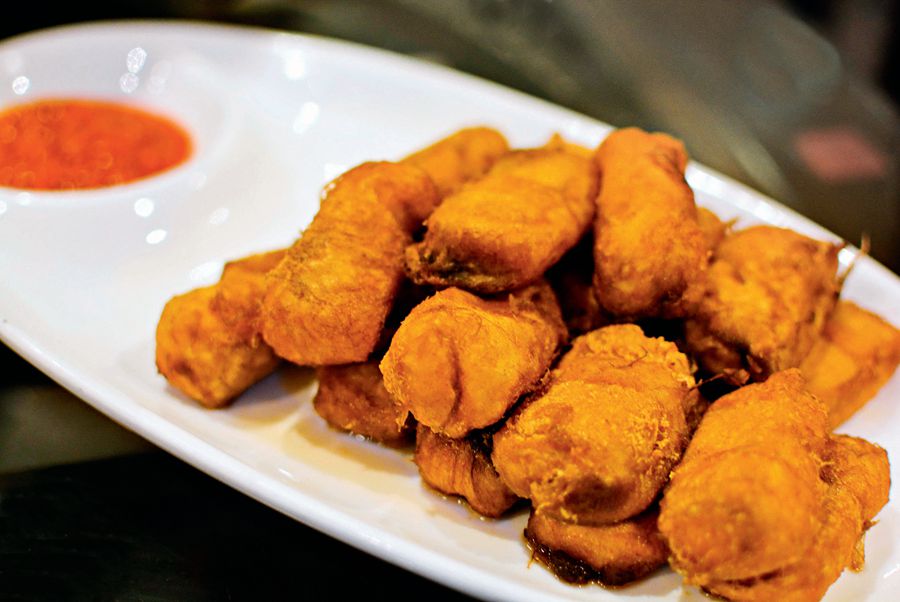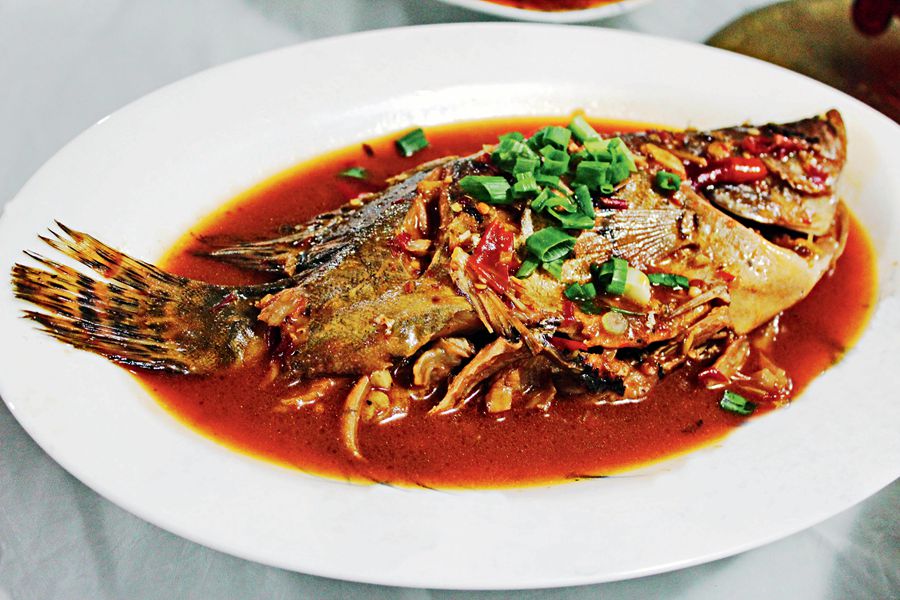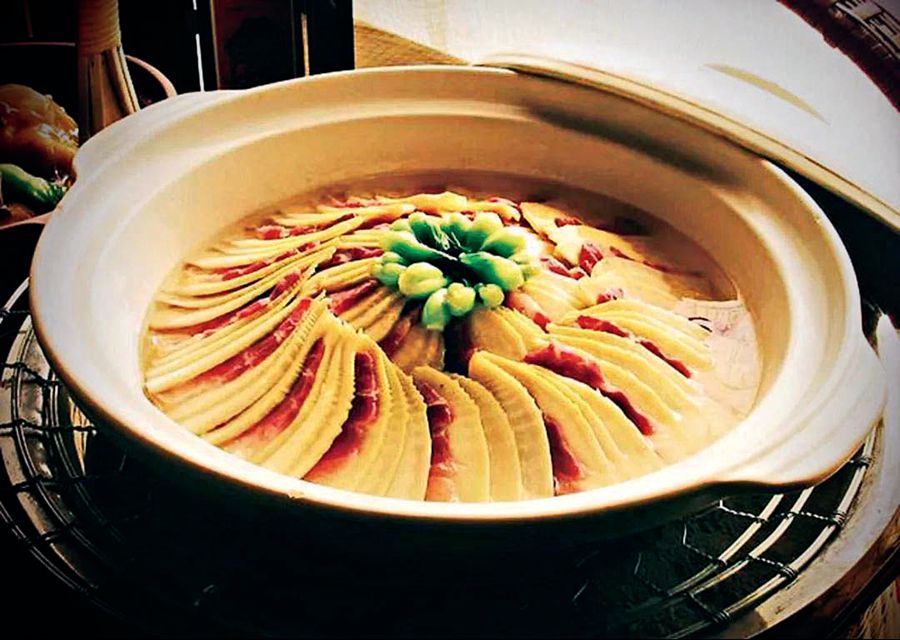ANHUI cuisine can be traced back to the Southern Song Dynasty (1127-1279) in ancient Huizhou. This city later became what are currently Huangshan City and Jixi County of Xuancheng City in Anhui Province, as well as Wuyuan County in Jiangxi Province. Situated among green mountains and surrounded by blue water, Huizhou was abundant in natural resources. Thus, Anhui cuisine values the original flavor of ingredients. The food, stewed with all sorts of ingredients from the mountains and rivers, has high nutritional value.

Huizhou Mao tofu.
In early April when the peach trees are in full bloom during days of drizzling rains, streams begin to surge and Mandarin fish are busy chasing tiny shrimp in shallow waters. The Mandarin fish is like a leopard with spots as disguise and has the underwater sprinting speed of a predator, and the explosive power of the fish strengthens its muscles.
Smelly Mandarin fish is a famous Anhui dish made with unique cooking techniques and has a distinctive aroma. Legend has it that some 200 years ago, fishmongers along the Yangtze River preserved the delicious Mandarin fish in buckets every winter and transported them to Huizhou. To keep the original flavor of fresh fish, they sprinkled light salt brine on the fish, and stacked them up layer upon layer in buckets. During the seven or eight days of transportation, they kept rotating the fish. When they arrived at their destination, the fish gill were still red colored and the fish scales had not fallen off. Even though the fish was a little bit smelly, after frying them in hot oil and being stewed for a while, it had a distinct aroma. The delicious dish and its special cooking skills have been passed down till today with an enduring reputation.

Smelly Mandarin fish.
Huizhou Mao tofu, or hairy bean curd, is a traditional vegetarian dish. The tofu sticks are fermented till they are covered in a layer of white fluff, and then deep-fried and roasted. It was recorded that Emperor Zhu Yuanzhang of the Ming Dynasty (1368-1644) was once defeated in Huizhou. The hungry emperor ordered his servants to search for food and then found several pieces of bean curd hidden among the grass by fleeing refugees. The moderate temperature had fermented the beancurd with long fluffs. They took back the smelly food and baked it on a charcoal fire. The distinctive flavor and aroma pleased the emperor, who asked to have the delicious food cooked for his troops. Many bean curd mills started to learn how to cook this recipe, and soon it spread in the Huizhou mountainous areas and has been popular since then. The secret of this popular dish is frying the tofu in oil till the two sides change into golden color and become wrinkled on the surface. Add in ground ginger, scallion, broth, salt, sugar, and soy sauce and stew it for several minutes. It is served with spicy sauce.

Wenzheng mountain bamboo shoots.
Wenzheng mountain bamboo shoots is another famous dish in Huizhou. Slice fresh bamboo shoots, mushroom, and sausage, put the bamboo shoots into a casserole, and add water. When the water begins boiling, reduce the intensity of the fire and stew it for 15 minutes. Add in sliced sausage and mushroom and stir-fry them together. When the broth thickens, add in some wet starch and slightly stir-fry. The tri-colored dish with red sausage, brown mushroom, and creamy bamboo shoots is not only tasty, but also has a mixed aroma. It is an essential seasonal dish that is eaten in the spring around Huangshan Mountain.


